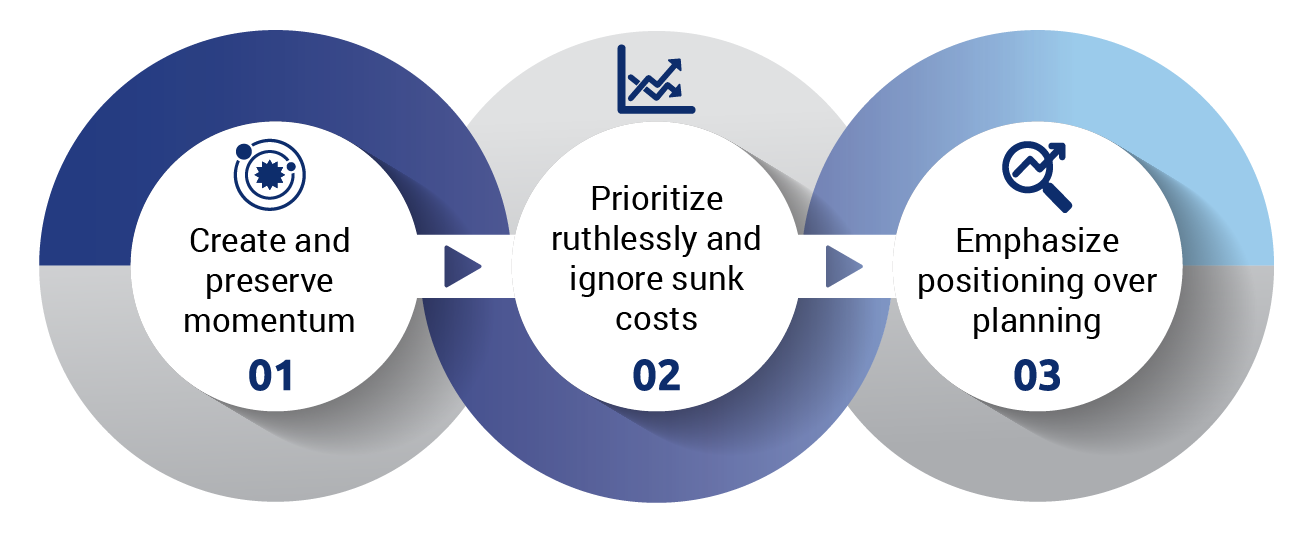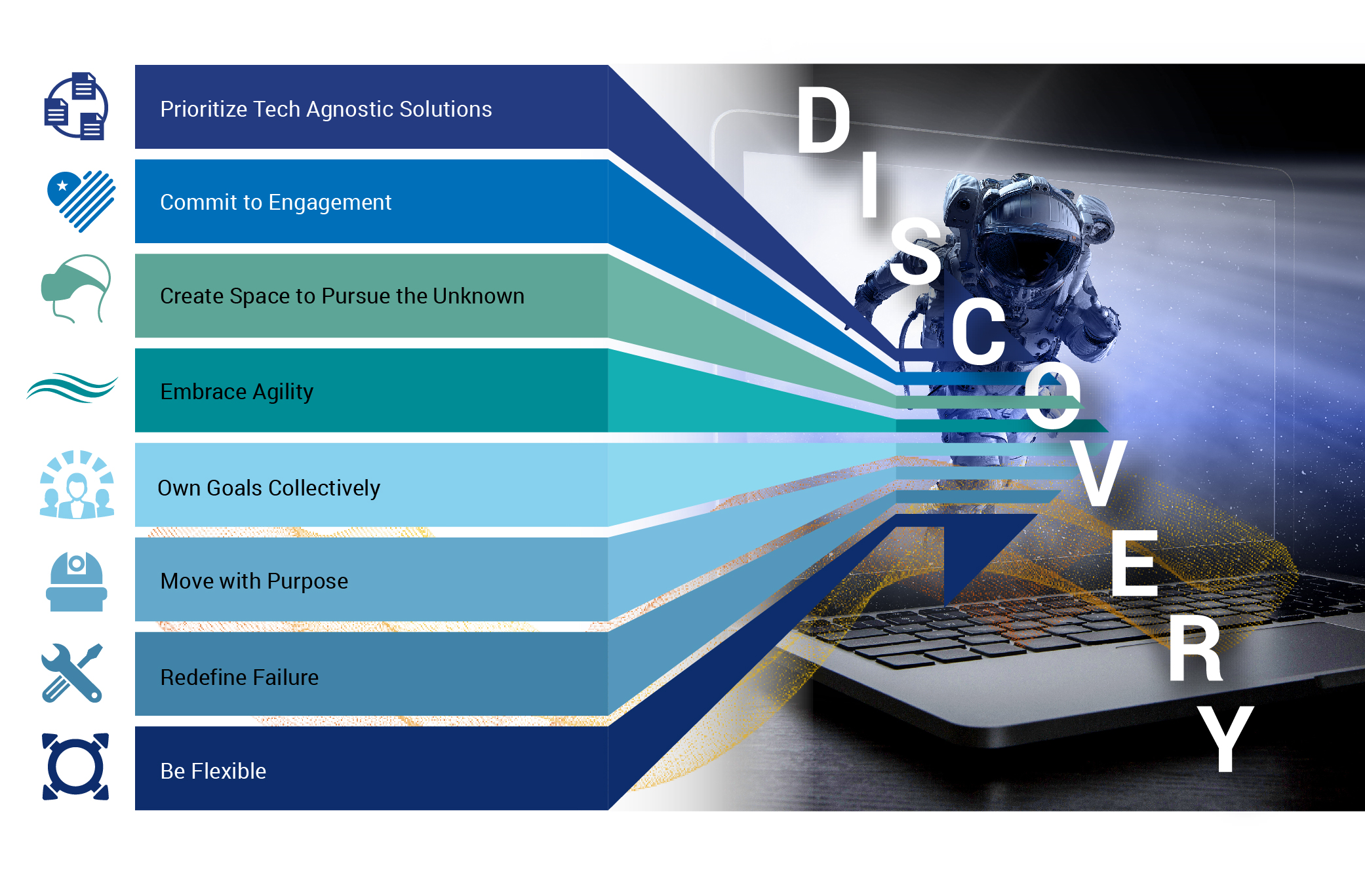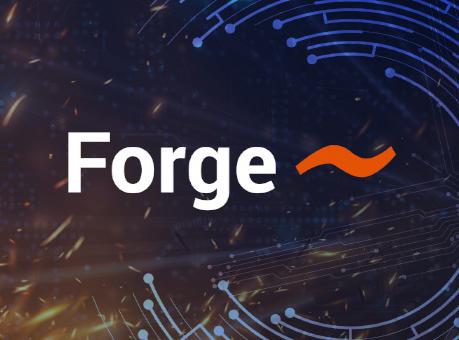
Exploring with Ranger™
This guide reviews Ranger™’s values, principles, practices, and roles for fostering innovation, growth, and exploration in a timeboxed agile environment.
Ranger™ is a deconstructed agile framework designed for the development of quick (~45 business day) prototypes and research projects. It best serves efforts around feasibility rather than perfect implementation.
Purpose
Ranger™ promotes bursts of exploration, knowledge growth, and proofs of concept in new markets and technologies by guiding teams through a progressive and deliberate pathway. It narrows the aperture of the solution space for economic decisions around further investment in product development, acquisition requirements, human capital, and risk mitigation. Ranger™ is not intended to sustain ongoing long-term efforts or guide projects with clear scope and mature technologies.
Ranger™ guides timeboxed exploration through variable length iterations called orbits. Orbits focus on goals to maximize optionality of pursuits based on real-time findings and discoveries.
Mindset and Values
Successful use and adaptation of a framework starts with mindset and values. Inculcating a team with unified purpose creates alignment across the team and offers members a beacon in uncertain situations. Standards and principles drive practices and tools.
Ranger™ establishes the feasibility of a concept through the following core values:
- Create and preserve momentum.
- Prioritize ruthlessly and ignore sunk costs.
- Emphasize positioning over planning.

Create and Preserve Momentum
Ranger™ enables quick decision making in areas of high uncertainty by promoting clarity through action. Efforts kick off when enough information is gained to begin, as opposed to when a Product Owner or team members feel confident in an end-to-end vision. Once underway, the team often discovers points of ambiguity. When this occurs, teams do not stop—they choose a hypothesis and move forward. If the hypothesis is incorrect, the team’s effort is not a failure. Instead, reprioritization occurs, often with a new hypothesis. Teams drive decisions through progressive and continuous action, which resolves into clarity.
Prioritize Ruthlessly and Ignore Sunk Costs
Promoting exploration and knowledge growth in new markets and technologies within a timebox requires clear prioritization. In the absence of information, proving or disproving of a hypothesis is paramount. Prioritization becomes grounded in understanding and context over time, as the team discovers new information.
Teams swarm around a single goal during each orbit to promote rapid discovery. Finding an unfeasible path does not result in failure but is knowledge gained. Regardless of the outcome, teams do not lose focus on the goal of refining the solution for economic decision making.
Emphasize Positioning over Planning
Detailed planning in a discovery-based environment yields limited benefit. Ranger™ prioritizes positioning, setting objectives to keep options available for as long as possible. By shortening iterations, teams can pivot with new discoveries, as opposed to following a path laid out before knowledge is acquired. The practices of Ranger™ empower team members to act quickly, confidently, and with tight feedback loops to follow emergent paths.
Principles
Values serve as the foundation for principles. The following principles guide the team’s actions.
- Prioritize Tech Agnostic Solutions: Ranger™ supports exploration. Agnostic solutions promote positioning.
- Commit to Engagement: Teams succeed when knowledge workers take initiative and create or preserve momentum, by continuing through ambiguity.
- Create Space to Pursue the Unknown: Comfortable patterns stagnate discovery. Support the pursuit of unknowns or doing something differently.
- Embrace Agility: Findings and opportunities will initiate pivots.
- Own Goals Collectively: Tasks outside of orbit goals is not introduced to round out capacity; team members swarm around goals to support ruthless prioritization.
- Move with Purpose: While welcomed, change and pivots must be purposeful. Even without unanimous agreement on the direction, the team understands the reason for the direction.
- Redefine Failure: Failure is not failure. Failure is not trying. Failure is playing it safe. Failure is waiting until you’re comfortable. Failure is lack of learning.
- Be Flexible: This guide helps teams learn and explore in ambiguous spaces. However, teams should modify practices to support their context.

Practices
Success patterns have emerged for teams using Ranger™. The following practices have consistently helped teams achieve positive outcomes in the 45-day prototype setting.
Prototype Kickoff: New prototypes often involve team members that have not worked together or with the Ranger™ framework. Given the timeboxing of prototypes to ~45 working days, team members will not have a much time to self-organize and go through the different stages of team performance. A prototype kickoff session creates transparency and alignment.
This kickoff introduces all team members, their availability, and their skill sets. The Product Owner shares the vision of a future state enabled by the proposed prototype. The team votes to move forward and those who cast a low confidence vote can raise concerns or risks to improve the odds of success.
To support the communication of the vision, the team’s Agile Coach can hold a session with the Product Owner to deconstruct goals and tasks into smaller pieces ahead of the kickoff session. The team is encouraged to make changes and suggestions to those tasks. The team must take collective ownership.
Orbits: While mostly analogous to sprints or iterations in other frameworks, orbits have a few key differences. Orbits are variable in length and goal driven. The Product Owner works with the team to select a hypothesis to test or concepts to build. Depending on the goal, the team agrees to an orbit length between 2 to 5 business days. If the goal will take more than 5 days, the team and Product Owner right size the objective to fit that window. This rightsizing is the extent of estimation in Ranger™.
Each orbit concludes with an informal review with findings shared and progress demoed.
Orbit Reviews: Analogous to iteration reviews in most agile frameworks, orbit reviews have small adjustments. These reviews offer informal opportunities for the team to demo progress and findings to shape what the team will work on next. The discussion includes stakeholders (such as Sponsors and Innovators). The feedback acts as input for refinement of the next orbit.
Because orbits can be as short as 2 days, teams can hold an internal review (Builders, Coach, and Product Owner) for smaller goals with consensus on the direction. However, to avoid a pattern internal-only reviews, teams should not limit the audience in consecutive reviews.
Daily Stand Up (DSU): As in Scrum, a daily tag up between the team is timeboxed to 15 minutes. Team members discuss the previous day’s accomplishments and any learnings that could affect the prototype’s direction. When the team is small enough, members can show progress via a demo. Team members also share and coordinate what they hope to accomplish for the day and raise impediments (but do not resolve them).
Parking Lot: The parking lot is a 15-minute block reserved directly after the DSU but used only if needed. In an ideal situation, team members are 100% dedicated to an effort but Ranger™ recognizes this to be unlikely based on business and financial realities. Blocking time for this session across the team gives members shared time to follow up on dependencies and coordinate regardless of other efforts’ effect on their availability.
Re-Visioning Session: Feedback is constantly collected and considered throughout prototype development. To holistically consider feedback, the entire team takes a step back and re-imagines what the prototype should and could be based on learnings and experiences. The team coach facilitates this session between 1/3 and 1/2 of the way through the prototype.
Retrospective: Like many agile frameworks, Ranger™ supports continuous improvement. However, orbits are shorter than typical iteration in most frameworks; therefore, a retrospective at the end of each would represent a significant transaction cost per orbit. The team’s Agile Coach facilitates a team retrospective close to 1/3 of the way through the prototype. This timing lets the team establish a baseline around how they work together and reap the benefits of any changes for as much time as possible.
Post-Mortem: The post-mortem serves as a specialized retrospective at the end of a prototype’s lifecycle to uncover systemic or process issues to consider and address for future prototypes.
Roles
Builders: Represent the team constructing the prototype or proof of concept and consists of different skillsets depending on the prototype and its objectives. A team working on a functional prototype may consist of UX designers, data scientists, and developers. In other cases, where a proof of concept may be the desired output, builders may consist entirely of designers.
Innovator: Bring forward the long term-vision of what a product or technology can be. They serve as a continuity bridge when a prototype or proof of concept receives further investment and moves forward with product development.
Sponsor(s): Decides on further economic investment toward product development at the prototype’s conclusion. Sponsors actively participate in reviews and demos, understanding a prototype’s addressable market and sharing that knowledge to support the Product Owner.
Product Owner: Marries the long-term vision of the Innovator with the Sponsor’s market knowledge to define and communicate a backlog that is both achievable in the prototype window (30–45 business days) and addresses market questions to inform a go or no-go decision. Product Owners seek knowledge and input from stakeholders and builders to make informed decisions around prioritization and scope. A Product Owner’s strength is intuition—using incomplete information to make decisions with positive outcomes.
Agile Coach: Institutes the Ranger™ model based on the team’s context. Coaches guide the team and Product Owner to preserve and prioritize optionality while pursuing the highest value and most promising options. Agile Coaches foster a culture of continuous exploration and learning by helping Product Owners frame requirements as a chance to test a hypothesis.
Agile Coaches adapt their role to the needs of each team while reinforcing the principles and mindset from this guide.
Final Remark
"Exploring with Ranger™" provides a guide to leveraging an agile mindset for fostering innovation, growth, and exploration in a timeboxed environment. Ranger™ promotes a culture of continuous action, prioritization, and positioning, enabling teams to make progress even in uncertain situations. Agility is context driven, modify this framework to best suit your needs.
Download a PDF of the Ranger™ Framework



